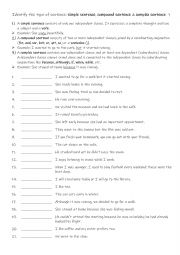
|
A2 Identify the 3 types of sentences: simple sentence, compound sentence & complex sentence 1
First, students need to familiarise themselves with the 3 types of sentences and their use. Then they read the sentences and identify which types they are. Each type is used 7 times! Answers on page 2.
Level: elementary
Age: 10-100
Type:
Downloads: 114
|
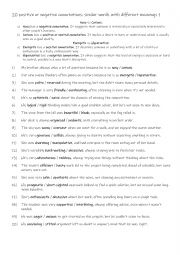
|
B1-B2 20 positive or negative adjective connotations - similar words with different meanings 1
First, students need to familiarise themselves with the sentences with 20 connotations and check their meaning of each word. Then they read the sentences to see which one is best to complete the sentence. Answers on page 2.
Level: intermediate
Age: 11-100
Type:
Downloads: 115
|
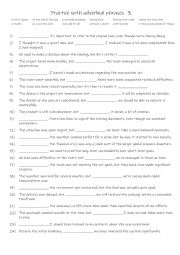
|
B1-C1 Practice with 12 adverbial phrases 3
Learning adverbial phrases are essential for effective and nuanced communication. These phrases allow students to organise ideas, express perspectives, and add emphasis or transitions in both spoken and written English. For instance, they can introduce initial impressions (at first glance), summarise a conclusion (at the end of the day), shift focu...
Level: intermediate
Age: 11-100
Type:
Downloads: 126
|
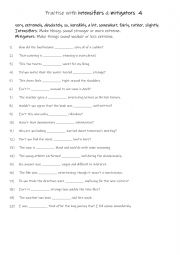
|
B1-B2 Practise with intensifiers & mitigators 4
First, students need to familiarise themselves with the intensifiers & mitigators and their use. Then they read the sentences to work out which one is needed to complete the gap-fill. Each intensifier & mitigator is used 2 times! Obviously, there are more than 1 possible answer! Possible answers on page 2
Level: intermediate
Age: 11-100
Type:
Downloads: 124
|
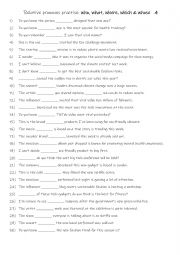
|
A1+-A2 Relative pronouns practise who, what, where, which & whose 4
Mastery of these pronouns also builds grammatical accuracy, making students more confident in formal and informal contexts. First, students need to familiarise themselves with the pronouns and their use. Then they read the sentences to see which one is needed to complete the sentence. Answers on page 2.
Level: elementary
Age: 8-100
Type:
Downloads: 113
|
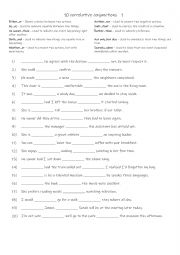
|
B1-B2 10 correlative conjunctions 1
First, students need to familiarise themselves with the 10 conjunctions and their meanings. Then they read the sentences to see which one is required to complete the gap-fill. Each linker is used 2 times! Answers on page 2.
Level: intermediate
Age: 10-100
Type:
Downloads: 129
|
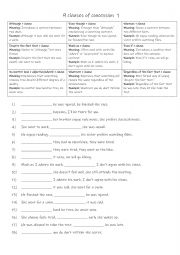
|
B1- B2 9 clauses of concession 1
First, students need to familiarise themselves with the 9 clauses and their meanings. Then they read the sentences to see which one is required to complete the gap-fill. Each clause is used 2 times! Answers on page 2.
Level: intermediate
Age: 10-100
Type:
Downloads: 104
|
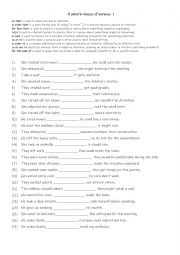
|
B1- B2 9 adverb clauses of purpose 1
First, students need to familiarise themselves with the 9 adverbs and check their meaning. Then they read the sentences to see which one is needed to complete the sentence. Each word is used 3 times! Answers on page 2.
Level: intermediate
Age: 12-100
Type:
Downloads: 108
|
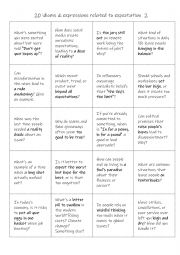
|
20 expectation idioms & expressions B1+-C1 part 2
This is a speaking reinforcement activity to supplement the other worksheet. Students working in pairs or small groups can either ask each other the questions or answer the question themselves.
Level: intermediate
Age: 12-100
Type:
Downloads: 104
|
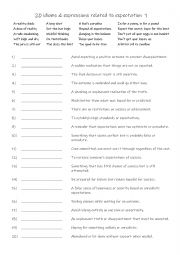
|
20 expectation idioms & expressions B1+-C1 part 1
First, students need to familiarise themselves with the 20 idioms and expressions and their meanings. Then they read the definitions to see which one is being described and write that word in the space provided Answers on page 2.
Level: intermediate
Age: 12-100
Type:
Downloads: 118
|












